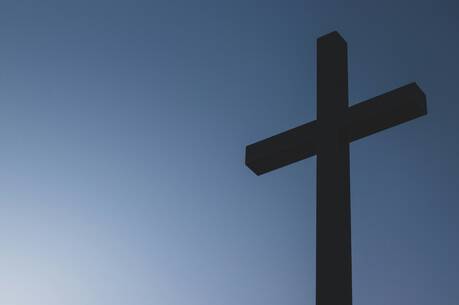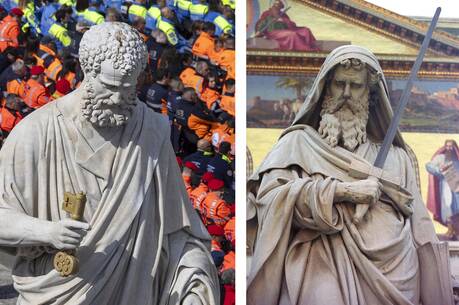No Carry-Ons Allowed
The readings plunge us into the middle of a shouting match. Amaziah, a priest of the royal shrine of Bethel in Israel (the northern kingdom), is throwing out Amos, a Judean prophet, telling him to go home and make a living. Amos replies that he is no prophet, that is, no court prophet in employ of the king, but was a shepherd and a farmer, and was called by God to prophesy to my people, Israel. The Gospel passage follows immediately the story of Jesus’ rejection as a prophet without honor, who then commissions his 12 disciples to adopt the prophetic life-style of itinerant preachers.
In Mark the formation of the disciples unfolds in stages. They are called to follow Jesus and become people who fish for humans (1:16-20); later they are called to be with him and are given power over evil (3:13-19). At this point their mission closely parallels that of Jesus: preaching repentance, confronting the power of evil, healing the sick. Jesus will later tell them that they too will be rejected by their loved ones (13:9-13).
The lack of material support, food, money and sack (briefcase) and their dependence on hospitality from others are signs of their total reliance on God and of their freedom. Unlike Amaziah, they are not prophets for hire. Shaking the dust from one’s feet was a symbolic act that the Jews performed when leaving a pagan or unclean land. The disciples are to symbolize to those who do not welcome them that they are subject to God’s judgment.
This lifestyle seems strange and even harsh to us today, and it was not really normative even in the early church. Still, it has lasting value. First the Twelve are to re-present in their lives the actions of Jesus, even though Jesus is not with them. Today people often ask where Jesus is amid disputes over authority in the church, endless meetings and projects for renewal or escalating signs of wealth and prestige. Yet people like Dorothy Day, Mother Teresa or Jean Vanier traveled light and made people ask where Jesus is truly found. The rejection of the disciples and the advice simply to continue to other places reminds the church that certain approaches may be fruitless, that it is time to move on. Though thrown out of the shrine, Amos moves on and delivers his strongest denunciations of those who trample on the needy and bring the poor of the land to ruin (Am. 8:4). Awareness of God’s call, traveling light and risking rejection, these are the carry-ons for true prophets.
This article also appeared in print, under the headline “No Carry-Ons Allowed,” in the July 1, 2000, issue.







